|
 Cortinarius achrous Cortinarius achrous
SynonymsRozites pallidus
BiostatusPresent in region - Indigenous. Endemic
Images (click to enlarge)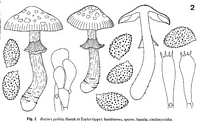 | 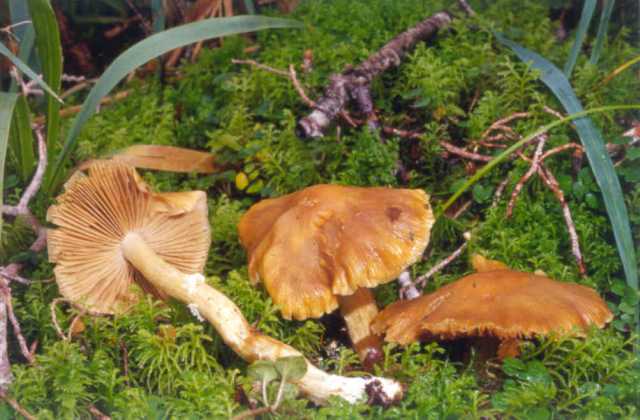
Caption: specimen RR NZ10
Owner: Richard Robinson | 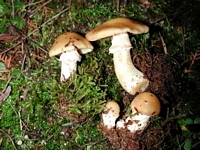
Caption: fruitbody
Owner: J.A. Cooper | 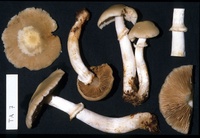
Caption: ZT8640, TA-7
Owner: E. Horak: © Creative Commons Attribution-Noncommercial 3.0 New Zealand | 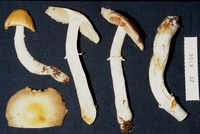
Caption: ZT8706
Owner: E. Horak: © Creative Commons Attribution-Noncommercial 3.0 New Zealand | 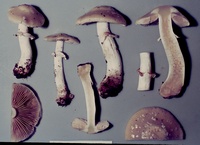
Caption: ZT68-507 , Holotype
Owner: E. Horak: © Creative Commons Attribution-Noncommercial 3.0 New Zealand | 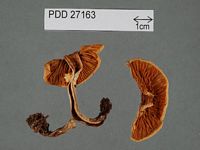
Caption: Dried type specimen
Owner: Herb PDD |
Article: Horak, E.; Taylor, G.M. (1982) [1981]. Fungi Agaricini Novazelandiae. XI. Rozites Karsten. New Zealand Journal of Botany 19(4): 353-360 (http://www.rsnz.org/publish/abstracts.php).
Description: Pileus - 55 mm, convex to umbonate when young becoming campanulate to umbonate-expanded; pale grey-brownish to pale argillaceous, with pale ochre tints over disc, strongly hygrophanous and striate along margin,glutinous; white, fibrillose patches and squamules of veil embedded in gluten. Lamellae crowded, pale brown to argillaceous, emarginate, edge even or subserrate, concolorous. Stipe -80 x -15 mm, cylindric to subclavate at base; white, turning pale brown near base, fibrillose; annulus white, striate, persistent; with few, incomplete, white belts of veil towards base; dry, solid, single, in groups. Context whitish to pale argillaceous, watery. Odour and taste not distinctive. Chemical reactions on pileus: KOH, HC1- negative. Spore print pale rust-brown. Spores 9.5-12 x 6-7.5 µm, amygdaliform brown, verrucose, mucro not distinct. Basidia 30-45 x 11-14 µm, 4-spored. Cheilocystidia 20-35 x 7-12 µm, subclavate, inconspicuous. Cuticle a cutis of cylindrical, strongly gelatinised hyphae (4-8 µm diam.), cylindric cells of subcutis up to 30 µm diam. encrusted with pale brown pigment. Clamp connections present.
Habitat: o n soil among litter and moss under Nothofagus menziesii (Hook.f.) Oerst. and N. fusca (Hook.f.) Oerst. New Zealand.
Notes: The most distinctive feature of Rozites pallida is (as the name indicates) the pallid pileus, which in fresh condition is covered by a thick glutinous layer with embedded white squamules of the universal veil. Macroscopically this New Zealand species resembles R. sarmienti (Speg.) Horak (1979) which is common in the South American Nothofagus forests both in Chile and Argentina.
|